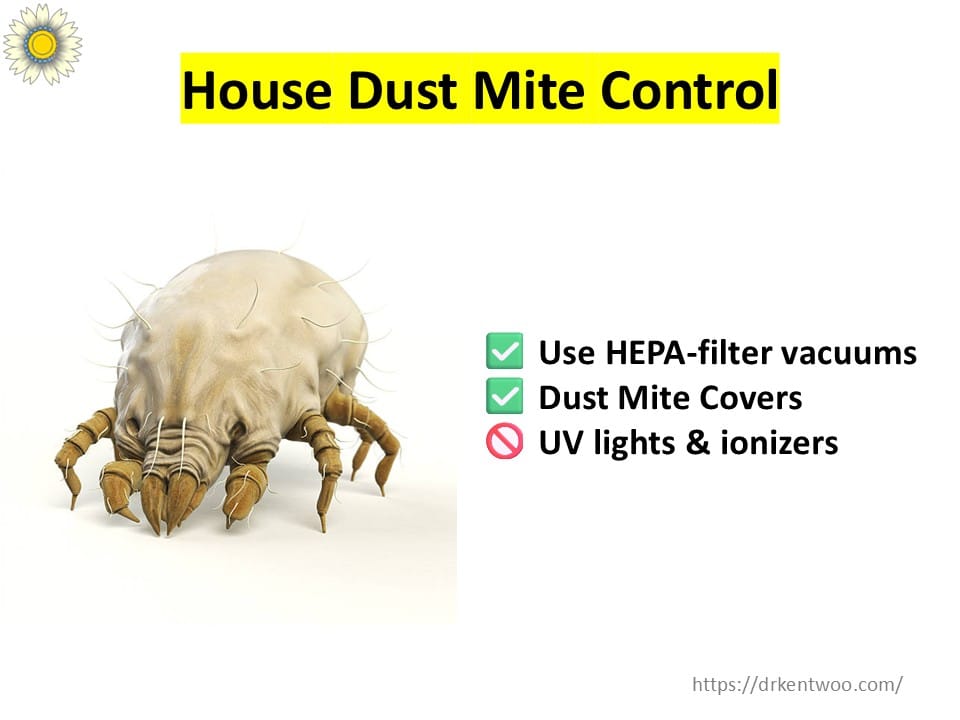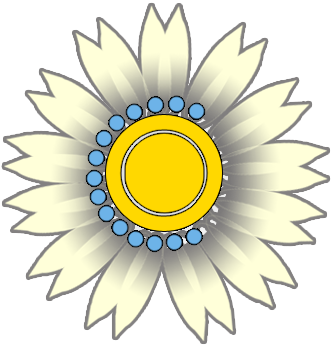House Dust Mite Control Measures: What Works & What Doesn’t

1) Bedding: The First Line of Defense
Since you spend a third of your life in bed, it’s crucial to minimize dust mite exposure in your sleeping area.
✅ Use allergen-proof encasings: Cover mattresses, pillows, duvets, and box springs with tightly woven, allergen-proof fabric to prevent dust mites from accumulating.
✅ Wash bedding weekly in hot water: Wash sheets, pillowcases, and blankets at 130°F (55–60°C). Hot drying at the maximum heat setting also helps eliminate mites. (hot washing and hot drying is optional)
✅ For non-washable bedding: Cover pillows and comforters with allergen-proof covers to reduce direct exposure.
2) Room Environment: Minimizing Mite Havens
Your bedroom and living space should be designed to limit dust accumulation and reduce humidity (which mites need to survive).
✅ Choose hard flooring: Replace carpets with wood, tile, or linoleum flooring whenever possible. If you must use rugs, opt for washable ones and clean them regularly.
✅ Avoid upholstered furniture: Choose leather, vinyl, or plastic furniture instead of fabric-covered couches and chairs, which trap allergens.
✅ Reduce clutter: Keep soft toys, books, and decorative fabric items in closed storage to prevent dust buildup.
✅ Switch curtains for blinds: Fabric curtains collect dust; blinds are easier to clean and don’t harbor mites.
3) Cleaning: Remove, Don’t Just Spread Dust
Vacuuming alone isn’t enough if you don’t use the right equipment. Here’s what actually helps:
✅ Use a vacuum with a HEPA filter or a double-layered bag to trap allergens instead of recirculating them. Don’t invest in expensive vacuums—just ensure they have proper filtration.
✅ Wear a mask while vacuuming or ask someone else to do it if you’re highly allergic.
✅ Wash or freeze stuffed toys:
- Option 1: Freeze soft toys at 5°F (-15°C) for at least 16 hours, then wash them to remove dead mites.
- Option 2: Put them in a hot tumble dryer (max heat setting) for 1 hour, reducing dust mites by 90% or more.
🚫 Myth Buster: Expensive vacuum brands like Rainbow or Dyson aren’t necessary—as long as your vacuum has a HEPA filter, it will do the job!
4) Humidity: Controlling Moisture to Starve Mites
Dust mites thrive in high humidity and die off in drier conditions.
✅ Keep indoor humidity below 50%: Use air conditioning or dehumidifiers to reduce moisture levels.
✅ Avoid humidifiers in bedrooms unless medically necessary—they encourage dust mite growth.
5) What Doesn’t Work? Avoid These Ineffective Methods
🚫 UV lights & ionizers: They may kill mites on surfaces, but they don’t remove allergens (mite droppings and dead mites still trigger reactions).
🚫 Ultrasound dust mite repellers: No scientific evidence proves they work.
🚫 Anti-dust mite sprays & poisons: They may kill mites, but they don’t remove allergens, and some contain chemicals that can irritate allergies further.
🚫 Essential oils & DIY “mite-killing” solutions: They might smell nice, but they won’t effectively eliminate allergens.
Key Takeaways: Winning the Fight Against Dust Mites
✅ Prioritize bedding protection – allergen-proof covers and weekly hot washing make a significant difference.
✅ Control humidity – dust mites struggle to survive when indoor air is dry.
✅ Choose easy-to-clean materials – replace carpets and fabric furniture when possible.
✅ Use HEPA-filter vacuums and dust-proof storage to reduce allergen buildup.
✅ Avoid unproven methods – focus on what’s actually effective.
By implementing these strategies, you can drastically reduce dust mite allergens in your home, leading to better allergy control, improved sleep, and healthier skin.
Need expert advice on managing dust mite allergies? Book a consultation today!




